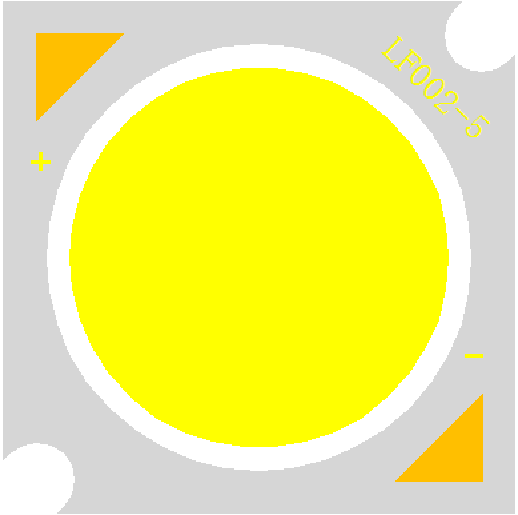COB mainstream trend is a foregone aluminum substrate still "take the big beam"
As we all know, the electro-optic efficiency of LEDs is only 20-30%, and most of them will be converted into heat energy. To dissipate these heat quickly, LED designers need to solve them through various heat dissipation schemes and heat dissipation materials.
Zhang Xianjun, chief engineer of Zhejiang Yingluohua, said: "The current mainstream heat-dissipating materials on the market include sapphire, ceramics, glass, metal, etc. However, the cost and performance of these types of materials are very different, so there is no big breakthrough in LED technology. The choice of materials becomes critical – step.â€
Zhang Xianjun said that in addition to the high cost of sapphire substrates, it is still difficult to mass-produce, and there is not much room for cost reduction. The safety and service life of the glass are worrying. One of the fatal problems of glass is that there will be blue light leakage on the side, which will affect the light effect and color and also cause damage to the human eye.
In addition, the aluminum substrate is simple in process and low in cost, but due to its concentrated heat, the generated heat cannot be transferred to the heat sink heat sink in time, and the junction temperature of the chip will rise rapidly, so that the luminous efficiency of the chip is greatly reduced, and the junction temperature is easily generated. Affect the life of the lamp. Ceramics have the advantages of both insulation and heat dissipation, but the fragility and high processing cost are their biggest drawbacks.

Comparison of the performance of four major substrates
Wen Kemin, general manager of Heding Circuit, said that in the face of different heat dissipation materials, different application markets will be selected to select different heat dissipation material substrates. "In the future high-power package form, flip-chip and COB will become the mainstream trend. This type of package is mainly based on ceramic and aluminum substrate materials, while the traditional SMT package is mainly focused on the selection of aluminum substrates."
Zhang Xianjun agrees that the COB packaging form has become a trend. For the selection of the heat sink substrate in the package form, he said, "The majority of the heat sink substrate materials used in COB packaging in the industry still use aluminum substrates. In addition, some have gone in technology. Leading-edge large companies, including Philips and Osram, have introduced ceramic substrates, but since most SMEs don’t know enough about ceramics, they are not so fast."
Weng Ping, director of Hongli Optoelectronics Engineering Technology Center, pointed out that the company's COB products include aluminum substrates, ceramic substrates, copper substrates and so on. However, since the cost of substrate materials accounts for 20-30% of the cost of the entire COB product, the cost-effective aluminum substrate still occupies a major market share. "Most of our COB series products use aluminum heat sink substrates, especially Most of the 3-50 watt products are aluminum substrates."
“Our flip-chip COB LF002-5 adopts aluminum substrate with thermal resistance as low as 2°C/W, low heat, long life and high cost performance, only 0.58$/KLM.†Weng Ping said, “In addition, the product adopts Anti-vulcanization design, eliminating the vulcanization hazard, 3-step MacAdam elliptical sorting, no color difference protection."

Hongli photoelectric flip COB LF002-5
Weng Ping also said that the reflectivity of the aluminum substrate COB is higher than that of the ceramic-based COB, but Weng Ping also admitted that the aluminum substrate also has certain disadvantages. For example, in the welding process with the glue, due to the large light-emitting area, the inside of the device The colloid may damage some of the structure of the wire, which affects the heat dissipation.
Therefore, Weng Ping reminded that in the process of welding, the solder can not be bonded to the surface of the glue, otherwise it is easy to make the glue appear some discoloration during the aging process. When lighting companies choose devices, they can observe and do not choose devices with dull surfaces.
In addition, for the difference in the choice of heat-dissipating substrates between domestic and foreign packaging companies, the above-mentioned industry insiders said that in general, foreign companies pay more attention to the actual effect of heat dissipation, while domestic enterprises are more inclined to consider the cost.

Piezoelectric Ceramic Actuator Plate,Piezoelectric Bending Ceramic,Piezo Ceramic Diaphragm
NINGBO SANCO ELECTRONICS CO., LTD. , https://www.sancobuzzer.com